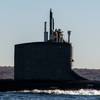The Marine Environment Protection Committee (MEPC) of the International Maritime Organization (IMO) is expected to decide on the timing of the global 0.50% sulphur cap for marine fuels in October this year, based on the result of a low sulphur fuel availability study required under MARPOL Annex VI.
Regardless of whether the global 0.50% sulphur limit takes effect in 2020 or 2025, the change from the current 3.50% to a 0.50% sulphur limit is a seismic shift on an unprecedented scale in the history of refining and shipping. It seems unrealistic to expect to successfully achieve this shift overnight.
Implementation of the global 0.50% sulphur limit in 2020 outside designated emission control areas (ECAs) where the fuel sulphur limit is 0.10% would likely be more challenging than 2025 from an overall supply/demand balance standpoint . A delay to 2025 would nevertheless bring a number of transitional challenges that cannot be ignored.
Issues with an abrupt global switch from 3.50% to 0.50% sulphur bunkers:
Shifting global bunker supply from residual fuel to 0.50% sulphur fuels, which are expected to be principally distillates, cannot happen overnight.
Market disruption likely to inflate distillate prices in marine fuels market and beyond.
Weak initial compliance may set unhealthy precedent and create uneven playing field.
The shift is not a ‘flick of a switch’ process for ships.
HFO supply infrastructure may disappear and undermine adoption of abatement technology.
There are numerous challenges for global shipping associated with an overnight shift from fuels with up to 3.50% sulphur to maximum 0.50% sulphur that would likely lead to a period of significant disruption and market distortion. IBIA believes it would best serve global shipping if the IMO signatories to Annex VI were willing to consider strategies to mitigate these disruptions, while still achieving the desired environmental benefits in a realistic but nevertheless ambitious timeframe.
Options may include the following that may be considered on their own, or in combination:
Introduce the 0.50% limit only in EEZs initially, possibly region by region
Gradual introduction of the cap by ship type
Allow exemptions for ships committed to emission compliance retrofits
Confirm the issuance and acceptance of fuel oil not availability notices (FONARs) permitted under Annex VI
Allow a period of adaption and monitoring before requiring and enforcing compliance
Gradual reduction in the sulphur limit
Amend the regulation to allow effective global enforcement.













